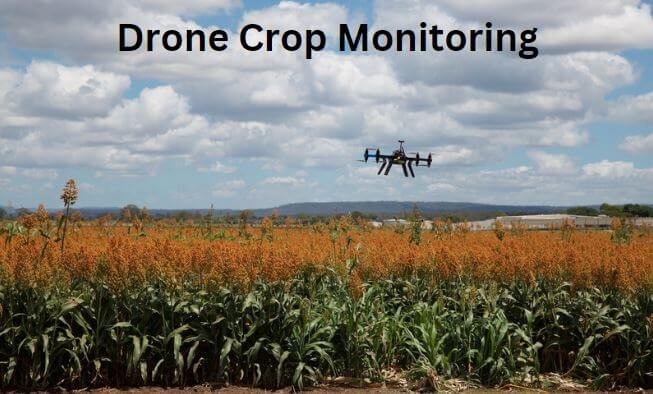In Kenya, the agricultural sector is one of the main pillars of the country’s economy. It contributes a significant 22.4 percent directly to Kenya’s GDP and an additional 27% indirectly by intertwining with other industries. This sector is also pivotal for Kenya’s exports, bringing in over 60% of the export revenue, as reported in 2017 by the Kenyan government.
Specifically, Embu County, situated in Kenya’s highlands, stands out as a crucial agricultural hub. Here, farming is not just a means of sustenance but forms the economic lifeline for the region. A substantial 70% of the local populace depends on agriculture for their livelihood. They cultivate crops like passion fruit, maize, beans, and rearing livestock, including dairy cattle and poultry.
However, the agricultural stability of these regions is under threat. Factors like a burgeoning population and climate change-induced challenges are impacting agricultural yield. The compounding effects of soil degradation through overuse, erosion, and suboptimal farming techniques, are jeopardizing the counties’ agricultural output, posing risks to food security.
Let’s get into more detail on the issues Kenyan farmers face and how modern agricultural technology can help to tackle those.
Challenges of Agriculture in Kenya
Although the country’s landscape and local soil properties are among the critical reasons farmers in Kenya face issues when growing crops, a key issue is the slow adoption of modern technology. Despite efforts by the Kenya Agricultural Research Institute (KARI), many farmers still rely on outdated methods, depriving themselves of potential productivity gains.
Climate change doesn’t help the situation, transforming semi-arid areas into arid zones and complicating agricultural activities.
Pest and disease management is another critical issue affecting crops in fields and storage facilities. Inadequate storage and misinformation have led to significant losses, such as aflatoxin contamination in maize.
Bad infrastructure, especially the lack of rural roads or their horrible state, also poses a problem, leading to loss of goods and increased production costs. This not only reduces farmer profits but also elevates market prices.
So, what is the way out? How do Kenyan growers fight against these obstacles? The answer is technology. Over the past ten years, Africa has seen a surge in digital agricultural services, with Kenya actually leading the way.
These services, often accessible via mobile phones, incorporate advanced agriculture technologies like satellite imagery, ground sensors, blockchain, and big data analytics. They provide critical access to information, markets, and financial products, enhancing the use of technological advances in agriculture to increase harvests.
Find Out: How To Start Dragon Fruit Farming In Kenya
Technology in Agriculture and Food Security in Kenya

In 2020, Kenya was recognized for using 95 digital agricultural services, double the number in Nigeria, the second-ranking African country in this domain. Such services come from both small startups and large corporations, offering solutions in consulting, finance, and market connections.
Unfortunately, widespread adoption of these digital solutions is still a challenge. In sub-Saharan Africa, only a few services have garnered over a million users. In Kenya, the adoption rate among farmers is between 20% to 30%, which, while higher than in neighboring countries, is still relatively low.
Kenya’s success in digital agriculture can be attributed to its early development of mobile network infrastructure, government policies conducive to investment and competition, and a vibrant ecosystem of innovators, hubs, and angel investors. This environment nurtures local start-ups catering to a technologically adept and educated user base.
For the digital transformation in Kenyan agriculture to really blossom, there needs to be a connection between viable digital service providers and their potential users. This requires not only digital bridges linking various services and users, but also human connections to address technological and skill disparities, build trust in services, and reach the unconnected.
Aggregator platforms that incorporate agricultural intermediaries are key in building these connections. They must understand and cater to the varied demands and capabilities of their users.
Matching the design and marketing of digital agricultural services to user needs and abilities is essential. Likewise, continued public and private investment in skills, infrastructure, and business environments is crucial for the providers of these platforms to realize their full potential and showcase the advantages of technology in agriculture.
At The Forefront of Food Security

Food security in the country is threatened by different factors, with climate change and unsustainable agricultural practices being the most evident. For example, erratic rainfall patterns, a direct consequence of climate change, disrupt rain-fed agricultural systems, leading to unpredictable crop yields.
Frequent and severe droughts and floods add another layer to this issue, affecting both crop yield and quality. Additionally, rising temperatures contribute to an increase in pest and disease prevalence, diminishing crop productivity. Climate change also accelerates land degradation, targeting soil fertility and water retention, which are vital for plant health.
To address these challenges and promote sustainable food production, Kenya is exploring the power of advanced agriculture technology. This includes the use of satellite imagery and remote sensing for precise monitoring of crop state, soil quality, water usage, and much more. Drones are also becoming more prevalent for efficient crop monitoring and precise application of inputs.
And of course, mobile technology plays a pivotal role in delivering all the necessary data to farmers, including weather forecasts, market prices, and farming advice. Smart farming technologies that rely on climate data are being adopted, including conservation tillage, agroforestry, and diversified cropping systems, to enhance resilience against unpredicted weather events. One cannot overestimate the role of precision irrigation systems like drip irrigation and automated watering systems in regions facing water scarcity to ensure efficient water usage.
Furthermore, data analytics and artificial intelligence are leveraged in farm management to analyze patterns and predict outcomes, helping growers optimize resources and improve yields. By integrating these technologies and practices, Kenya aims to enhance its food security and make its agricultural sector more resilient and sustainable against the backdrop of climate change.







